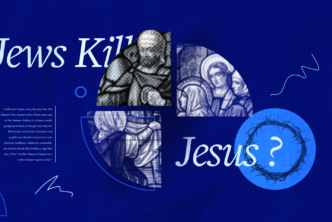Views that deny or question the common descent of all human beings from an original first pair—whether or not they affirm the historicity of Adam and the fall—are, in my view, beset with insuperable exegetical and theological difficulties. Most pronounced are those difficulties encountered in the teaching of Paul.
1. Without First, There’s No Place for Second or Last
In both Romans 5:12–19 and 1 Corinthians 15:21–22, 44b–49 the controlling interest is clearly Christ, his person, and his work. In both passages two more things are equally plain: 1) a sweeping historical outlook on Christ and the salvation he has accomplished, and 2) within this historical outlook, and fundamental to it, a contrast with Adam makes itself evident. In 1 Corinthians 15:44b–49 this perspective is the most comprehensive possible, evidently intended to cover the whole of human history from its beginning to its end, from the original creation to its consummation.
Accordingly, in verse 45 Adam is in view as he was by virtue of his creation, before the fall (Adam in Genesis 2) and is contrasted with Christ, “the last Adam” as he now is resulting from his resurrection. In Romans 5 and 1 Corinthians 15:21–22, the scope of the historical outlook is only slightly less comprehensive, with Adam on the one side now in view as he was after the fall: a sinner (in Genesis 3). For Paul, redemptive history has its clear and consummate ending with Christ as it has a definite and identifiable beginning with Adam.
In both passages the significance of Adam and Christ as historical individuals is more than an individual significance. They are contrasted as each represents others in a way decisive for those “in him”: For himself, and all those “in him,” Adam by his disobedience has brought into the originally good creation sin with its consequences (condemnation and death; there is no sound reason to question that bio-physical death is included). Likewise for all “in him” Christ by his obedience has brought salvation from sin and its consequences.
We must not miss the significance of the identifying terms in this union-based contrast with the representation involved. Christ in his saving work is both “second” and “last”; Adam is “first” (1 Corinthians 15:45, 47). The uniquely pivotal place of each in the unfolding of redemptive history is, respectively, at its beginning and its end. Further, their roles are such that no one else “counts”; no others come into consideration. Only Adam is the “type of the one who was to come” (Romans 5:14). As Christ is the omega-point of redemptive history, Adam is its alpha-point. It cannot be stressed too emphatically that these passages teach that essential to Christ’s work of saving sinful human beings is his full solidarity with them (personal sin excepted) (Hebrews 4:15), as he is the “second” and “last,” and, further, that he has, and can only have, this identity if Adam is the “first.” Without the “first” there is no place for either “second” or “last.”
2. It is Not Enough to Simply Affirm the Historicity of Adam
Views that consider the issue of Adam’s historicity immaterial for Paul’s teaching typically hold that in our passages “Adam” is a personification (or a “teaching model” as it has been put) to highlight the universality of human sinfulness. Suffice it here to point out that this Adam-as-everyone view flatly contradicts a cardinal and sustained emphasis in Romans 5—Adam’s sin is the one sin of the one man, and it has its significance precisely in distinction from the sinning of “many” or “all” as the consequence of his one sin (verses 12, 15, 16, 17, 18, and 19). To conclude that the historicity of Adam is irrelevant for Paul’s teaching makes responsible exegesis irrelevant.
Other views affirm Adam’s historicity as an archetypal figure. They view Adam as “first” in the sense that at a subsequent point in human history God set him apart as a representative from among a considerable number of already-existing human beings for his dealings with humanity initiated at that point. Such views face an insurmountable difficulty. In 1 Corinthians 15 Adam is not merely “first”—he is that “first” for those who “bear [his] image” (verse 49).
Image-bearers of Adam would hardly be an apt description (much less a valid or even intelligible description) of human beings who existed before Adam and subsequently did not descend from him. Adam is the representative of all who—by descending from him—are in natural union or solidarity with him, and he represents only them. It is not enough to simply affirm “the historicity of Adam.”
This is not a minor point. Paul is clear in verse 49. Believers will bear Christ’s “heavenly” image, the redeemed and glorified image of God, as they have borne Adam’s “earthly” image, the original image of God defaced by sin. It is quite foreign to this passage—especially given its comprehensive outlook noted above—to suppose that some who are not in the image of Adam will nonetheless bear the glorified image of Christ. There is no hope of salvation for sinners who do not bear the image of Adam by ordinary generation. Christ cannot and does not redeem what he has not assumed, but he has assumed the nature of those who bear the image of Adam—by natural descent.
These comments presuppose that the divine image is not only functional but also ontological and as such includes a psycho-physical component—the body. Among other biblical considerations, we can see that the body is an inalienable aspect of the divine image from the fact that its resurrection is an ultimate hope of the salvation of believers. This hope is nowhere made more clear and emphatic than in these verses from 1 Corinthians.
3. Why This Matters for Redemptive History
I hope to never be guilty of unduly escalating the stakes in matters of our biblical and theological understanding—including its implications for scientific endeavors. But on the question of common descent, there is no room for mixed messages. Let’s not suppose that we are faced here with just one more “Galileo moment,” as it has been put, where we Christians need to adjust our thinking and get on board with the current results of science. The issue here is not an aspect of our ever-revisable and often changing understanding of the physical workings of ourselves, our environment, and the universe at large. Rather, we are discussing perennial and unchanging matters basic to who we are as human beings—what it means to be created in God’s image and the kind of relationship with him that entails.
In my view then, if Adam is not the first, who subsequently fell into sin, then the work of Christ loses its biblical meaning. If it is not true that all human beings descend from Adam, then the entire history of redemption taught in Scripture unravels. The result is no redemptive history in any credible or coherent sense and so the loss of redemptive history in any meaningful sense.




